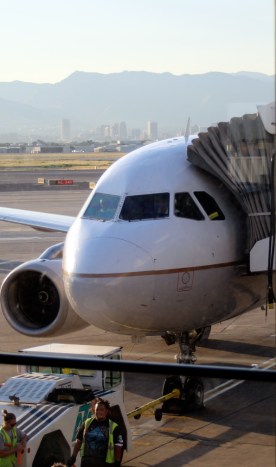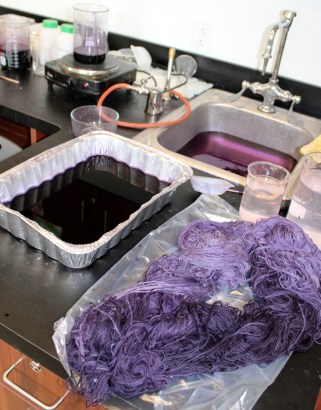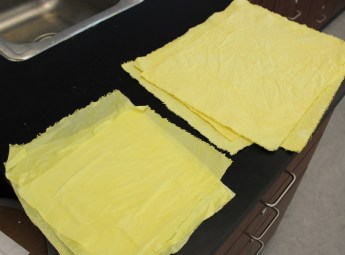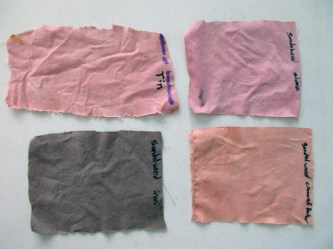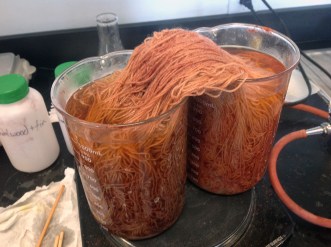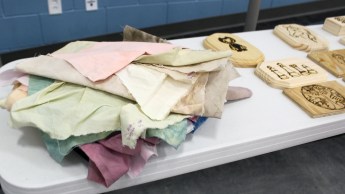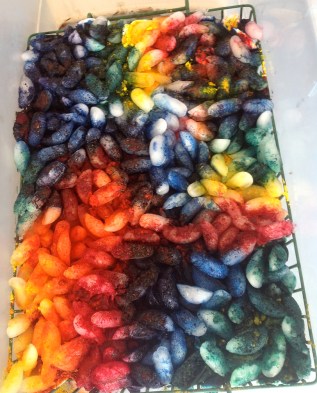Trans-Pacifica, Part II

Passengers boarding the 777 for our flight to Narita, Japan on Thursday, July 13, 2017. This was my first time on a Boeing 777.
We flew into San Francisco International (SFO) over the south bay and landed, then taxied to our gate. Because we were late, the captain asked if those not in a hurry could wait to deplane until the rest of us had left. I hurried off the plane and asked a gate agent standing at the departure board how to get to the international terminal. She pointed the way, and I discovered that the agent in Salt Lake needed to come up with new definitions of what “just” and “around the corner” mean. It was quite a walk with my overloaded computer bag to find Gate 101, but I did it in about 20 minutes. As I descended the escalator into the gate area I saw Mike and Alicia, two other TC teachers, waiting in line to board. The flight was departing 15 minutes late, so I hadn’t needed to worry. Oh well.
We went through the boarding line and walked to the airplane. It is a brand new Boeing 777, and I have never seen a first class section like it. Each person has their own fully reclining seat with its own private compartment, counter, and computer screen. Not to mention slippers and other amenities. Perhaps someday I will be able to afford such seats, but not today. I found my seat (30D – just to the right of the left aisle) and put my camera in the overhead bin and my snack bag and computer bag below. Alicia was just behind me and Mike just ahead behind the bulkhead, where he has more leg room. Actually, the legroom here isn’t too bad – my knees don’t touch the seat ahead, which is much better than most domestic flights I’ve been on recently.

First class compartments on a Boeing 777. Each compartment has a reclining chair and is like a small sleeper car on a train. But these were not my seats.
Everyone finished boarding and 12:00 (our new departure time) came and went. This plane has a built-in mini-computer (similar to an iPad) in the back of the seat before us, so I scrolled through the directory and found the Mars series by National Geographic, which I’ve watched the first episode of back in February. I started watching the second episode. The captain came on the intercom to announce that the delay was because of a radio transponder that wasn’t working right and had to be fixed before we could depart. They were working on it and would keep us updated.
I finished the second episode and went on to the third. The captain came on to say they had called in a ground support team and that a flight from Korea had had the same problem this day. So if it’s a continuing and persistent problem over multiple aircraft, why hasn’t it been fixed? Or why don’t they know how to fix it?
Time dragged on while we sat there and sat there. The third episode moved on to the fourth. 1:00, then 2:00, then 3:00 came and went. They came on the intercom to announce that a team from Boeing was looking into the problem. They let passengers off the plane to get food. I didn’t leave the plane, but did get up to walk around and use the bathroom. It was clear we would miss our connecting flight from Narita to Jakarta. Mike was keeping Sarah apprised of our situation.
Finally, around 5:00, they announced that the radio was fixed but that they now had to replace some of the flight attendants because they would go into overtime if they remained on the flight. They started to reboard the plane, and about 6:00 we went through the safety briefing (United is trying to copy the light tone of the Delta videos) and pulled away from the gate.
But our troubles weren’t over. Our taxi to the runway was delayed, and when we finally got close to taking off, the captain came on again – most apologetically, and said that the flight crew had timed out because of the delay. If we had taken off immediately, they would have been able to reach Narita just under the new regulated maximum flight times for flight crews. They had no choice but to taxi back to the gate and replace the flight crew.
So we turned around and headed back to the gate. The little indicator showing our plane on the map and our route across the Pacific had stayed in exactly the same place for six hours. Now the plane turned around but still didn’t move. It took us 15 minutes to return to the gate and another 15 minutes for United to find someone to extend the jetway. They were going to have a replacement crew standing by, but just before they got the door open they announced that the flight had been cancelled and we would be rebooked for a flight at 7:30 in the morning to Narita.
I am reporting this just as it happened but leaving out the groans and exclamations of disbelief that attended each of these announcements. It was past 7:00 before we got off the plane after going nowhere for seven hours. I realize that these problems were not entirely United’s fault (as compared with my experience getting to Omaha two years ago). But they could have managed the situation better. Knowing the flight attendants and flight crew were getting close to timing out, they could have replaced them before we taxied out to the runway instead of taking the chance.

Alicia and Mike, fellow teachers going to Indonesia. We are stuck in a stationary line at the customer service desk waiting for alternate flights when our flight to Japan was canceled.
We walked to the customer service desk, which was outside of security, and found ourselves in the same sort of extremely slow line I’d experienced two years ago. Canceling a flight isn’t an uncommon problem, so it surprises me that it takes the agents over ten minutes to handle each customer given all flights are available online now. I know getting luggage off of one plane and onto another is also a challenge, but there should be a better system. The agent didn’t seem to know exactly what to do and had to call several people. They need more training and faster systems. Here you have customers that have already been inconvenienced (a euphemism if there ever was one) and are already upset. Then you make them wait an hour in a line that doesn’t seem to be moving (the first class passengers were done before we even got moving forward). It’s not a great way to insure repeat business. They could at least have pulled more agents up to use all of the available kiosks. But no. While waiting in the slow lane, I found an outlet near the front kiosk and charged up my computer partially again.

United did provide us with drinks and snacks while we waited in the slow line for alternate flights. We are almost to the front after 45 minutes.
We finally got to the front and they found an alternate flight to Jakarta through Sydney, Australia, leaving later that night at 10:50. They checked our baggage claim tickets to make sure our luggage would be transferred to the new flight and issued new boarding passes. Our final leg from Sydney to Jakarta would be with Delta airlines through Garuda air, so we got a voucher for that flight but would need to get boarding passes at the gate in Sydney. They also gave us $20 in meal vouchers.
I tried all day to keep a calm perspective and positive attitude to all of this. At least we didn’t have to go to a hotel and get up early, recheck our bags, and go through security early in the morning. This way we had about two and a half hours before we needed to board and could get a meal in the airport. And I get to see Australia from the air as we fly over it tomorrow. I am trying to develop a kind of Zen attitude about travel. We’ll get there eventually, and this way, we’ve got another interesting story to tell. But I will not willingly travel on United Airlines ever again. Enough is enough.
